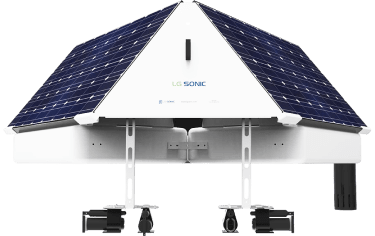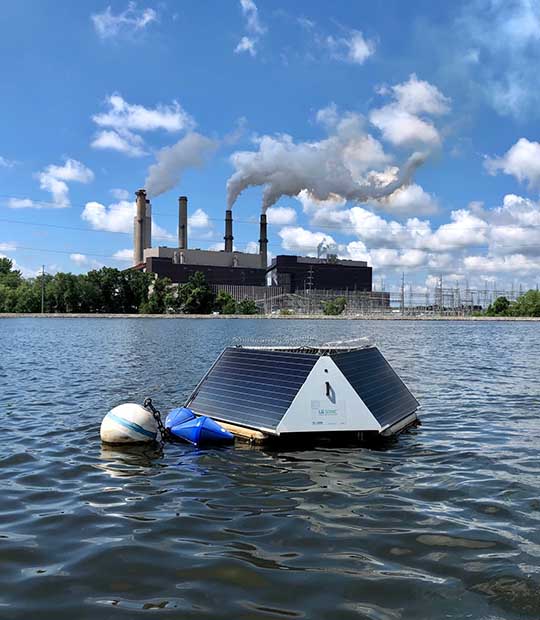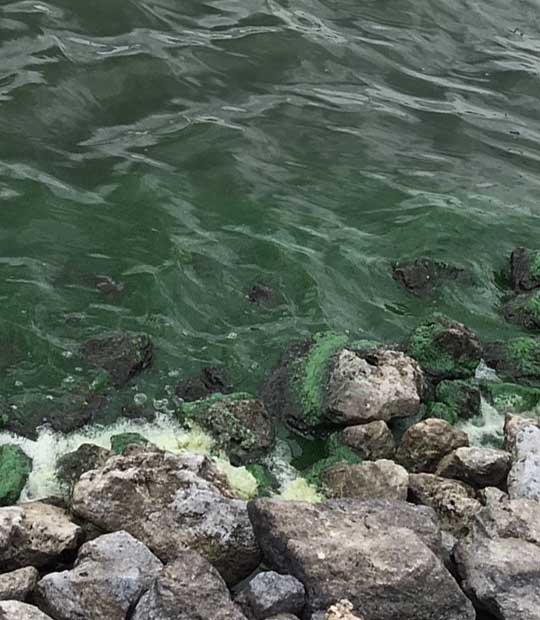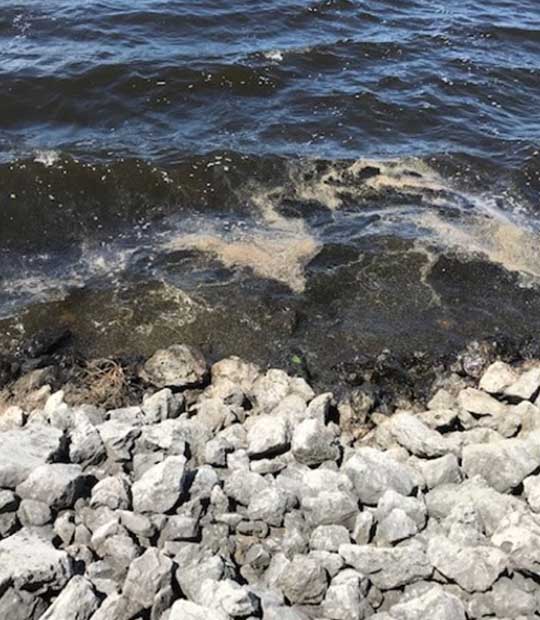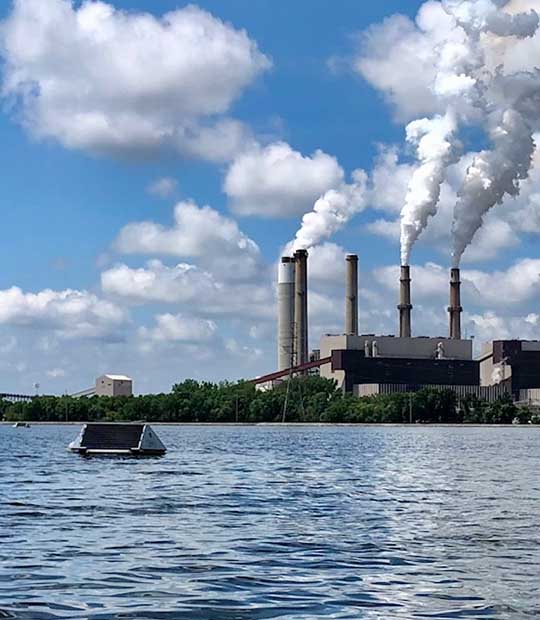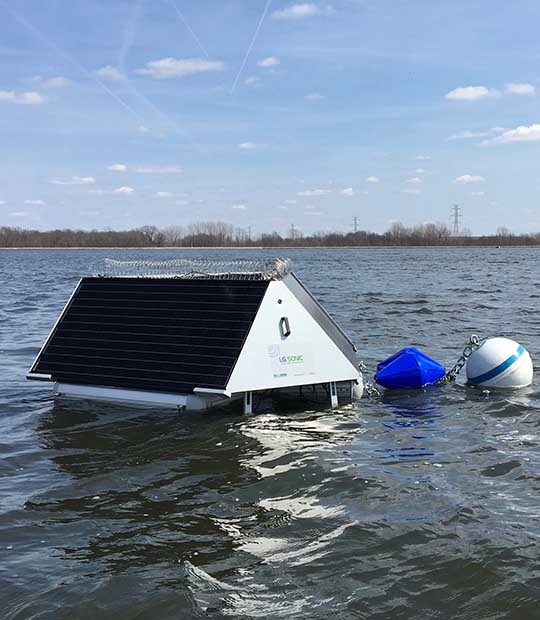NIPSCO reduced TSS levels to comply with NPDES regulations
Complying with NPDES regulations
NIPSCO began its cooperation with LG Sonic with the main goal of reducing TSS levels to comply with NPDES Regulatory Discharge Limits. Since the installation of 5 MPC-Buoy systems in the spring of 2019, TSS levels reduced to less than 3ppm.
Project summary
66%
Algaecide reduction within two years
Eliminated
UV blocker chemical from their treatment program
Improved
Water quality and environmental impact
R.M. Schahfer Generating Station in Northwest Indiana (United States) consists of four coal-fired units and two natural gas-fired units. To operate, the power station takes in water from the Kankakee River and daily discharges back as much as 21 million gallons of water. NPDES Regulatory Discharge Limits for TSS are 30ppm daily and average of 15ppm monthly. For years, NIPSCO tried to lower TSS levels using algaecide, but it never gave consistent results. Despite the use of chemicals, the filters from TSS samples remained green of algal blooms.
NIPSCO uses a large reservoir for settling out suspended solids prior to discharging the water back to the Kankakee River. This water is rich in nutrients, causing algae to grow at an undesired rate. Algae has a direct effect on pH and TSS levels in water.
In order to comply with NPDES effluent regulations, power facilities have to keep their discharge within strict pH and TSS ranges. The inability to comply with the discharge limitations in their permit could result in hefty fines and potentially result in the inability to operate the generating units. Not being able to discharge could also result in damage to the large cooling units, which are costly to repair.
Improved water quality and safe discharge
Since the installation of five MPC-Buoy systems in the spring of 2019, TSS levels remain at lower levels than 3ppm: “I don’t think I have seen TSS higher than 3ppm and it usually is below 2ppm. Water is very clear” said Brian Snyder, Senior Chemical and Environmental Specialist. NIPSCO calculated that using LG Sonic technology, just by reducing chemicals alone, the ROI of MPC-Buoys would be less than 2 years.
“We were using both an algaecide (quaternary amine) and a UV-blocker at all our cooling towers. By the end of season (2019), we eliminated using the UV-blocker chemical and we reduced the algaecide by 25%. In 2020, we were able to further reduce use of algaecide to 33% of what we used before the installation [of MPC-Buoy].
MPC-Buoy
All-in-one solution for controlling algae in drinking water reservoirs.
